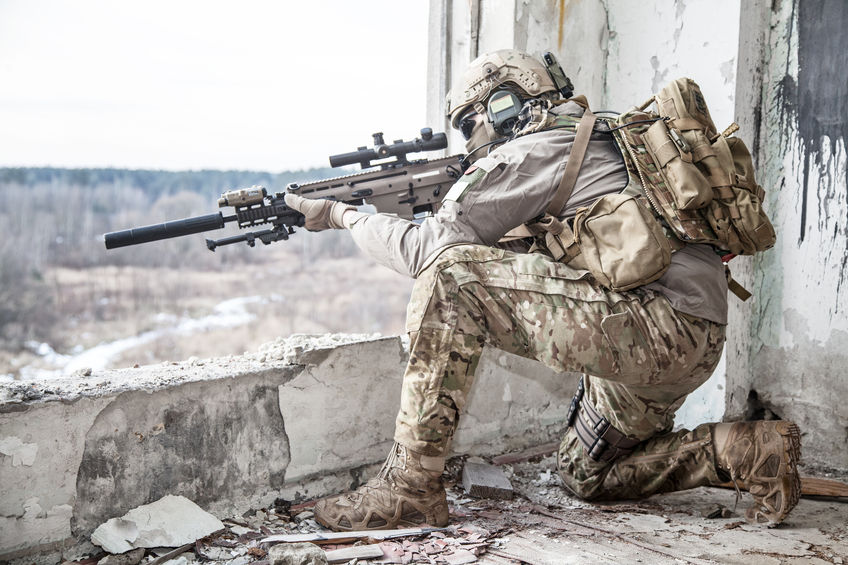Understanding Class 3 Firearms and the NFA

If you’re a firearms enthusiast, then you’ve probably heard of Class 3 firearms. This class of weapons includes a variety of products, all of which need extra TLC because of their high power. However, owning military grade firearms is fun, for lack of a better word. It’s pretty cool to be able to experience what a lot of civilians don’t.
It’s important to remember that these high-powered firearms are regulated by the National Firearms Act (NFA), and only licensed dealers with a permit can sell them. They are highly collectible, and with a proper understanding, you too could be the proud owner of one of these pieces of equipment.
The National Firearms Act
Originally enacted in 1934, the NFA was established to place a tax on manufacturing, importing and dealing of certain types of firearms as defined by the act.
The Secretary of the Treasury required that all shotguns, rifles with barrels less than eighteen inches, machine guns, and firearm mufflers or silencers be registered. The ultimate goal was to deter any transactions involving NFA firearms.
If Congress found an unregistered NFA firearm, they assessed a $200 fine. This was the same as the tax imposed on imports, manufacturing, and dealing. It was significant enough in 1934 that Congress hoped it would prohibit these activities, and the tax is still in effect today.
Progression of the Law
In 1968, the NFA was amended with Title II, deeming part of the NFA unconstitutional. People who already possessed NFA firearms were no longer required to pay the fine. It violated their protection against self-incrimination under the Fifth Amendment.
Title II also prevents the use of information on any NFA application as evidence in a criminal case. It expands the definition of ‘machine gun’ and adds the term ‘destructive devices.’
Items Defined by the NFA
Firearms, or destructive devices, must meet one or more criteria as listed here to be included.
Machine Guns
The NFA defines a machine gun as “any firearm which shoots, is designed to shoot, or can be readily restored to shoot, automatically more than one shot without manual reloading, by a single function of the trigger.” Included are parts or combinations of parts intended to manufacture a machine gun, as well as machine gun receivers.
Rifles such as the AR-15 and M16 are considered machine guns.
Short-barreled Shotguns
Short-barreled shotguns include any shotgun with a barrel shorter than eighteen inches. Firearms made from shotguns with barrels shorter than 26 inches fall into this category as well. This includes sawed-off shotguns if the barrel length is less than 18 inches.
Short-barreled Rifles
Rifles are firearms fired from the shoulder. They fire one bullet at a time through a rifled barrel. Short-barreled rifles have barrels shorter than 16 inches, but also include firearms made from rifles, resulting in a firearm length of fewer than 26 inches.
If the rifle has a telescoping stock, this measurement includes the stock fully extended. If the stock is detachable, then the Firearm is measured without the stock. This measurement extends from the end of the muzzle to the front of the breech face.
Short-barreled rifles include M4 Carbines and semi-automatic pistols with shoulder stocks.
Destructive Devices – Explosive Ordinance
Any explosive device, poison gas, or incendiary including grenades, missiles, rockets, bombs, or mines are defined by this ordinance. The definition also includes parts used to make these devices. Claymore mines and improvised explosive devices (IED) qualify as well.
Destructive Devices – Large Bore Firearms
Projectile firearms with bore diameters larger than half an inch are considered large bore firearms. Most shotguns not specified by the ATF are exempt. Antique firearms “not likely to be used as a firearm” also don’t qualify. A manufactured date of 1898 is required for this exemption.
Silencers
Any device intended to silence, muffle, or diminish the report of a firearm is a silencer. Combinations of parts for the assembly or manufacture of a firearm are included. All commercial silencers on the market today fall into this category.
Any Other Firearm
The NFA includes a clause for any other firearm capable of concealment on a person that can be shot and discharged through the energy of an explosive. It’s a catch-all category including pistols with forward grips and cane guns.
With a better understanding of the NFA and what firearms are included, you can protect yourself and others while still enjoying the use of these military-grade pieces of art.
If you’re looking for firearms for sale, Grab a Gun specializes in all types of guns and accessories, and you’ll find many NFA firearms for sale including fierce-looking Sig Sauers, and this Kriss Vector.
All firearms are subject to NFA purchase guidelines, but now that you know what those are, you don’t have to worry. Happy firing!
